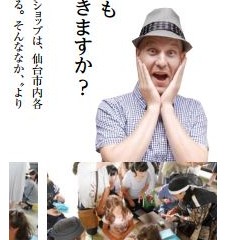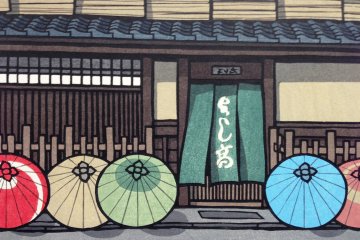Gion 's entertainment district is divided into three major business organizations: catering (仕出屋), the geisha house (屋形 or 置屋), and the teahouse (茶屋). Catering businesses prepare cuisine they directly sell and deliver to the teahouses. Meanwhile, geisha and apprentice maiko belong to a geisha house, being dispatched when evening entertainment is needed. Lastly, the chaya, or teahouses, offer a location which provides the cuisine, drink, and human interaction. Teahouses do not offer their own cuisine directly. You can think of the teahouses as a rental space where everything comes together and clients are hosted to a grand evening.
Even these days, the average person will find it difficult to be allowed to enter a teahouse. Teahouses will almost always refuse first time customers if they inquire about paying for an evening at the teahouse. Instead an introduction from a current client is necessary. This is not just a simple introduction either. The person introducing the new customer to the teahouse is basically guaranteeing that their inductee is trustworthy. This is why there is a strong relationship between the entertainment district and their customers. This trust is so strong that in fact, there is a custom for the customer not to pay for the evening's entertainment on the day of the event.
Conversely, the charges for the food and the hanadai (''price for flowers'' or specifically the price for geisha and maiko) is calculated and given at a later date.The landlady of the teahouse picks up the tab, thus trusting the customer to pay her back at a later date. With this system, a client's identity can be protected by not having him or her deal directly with showing their face to the various people collecting payments. Most clients of teahouses are in fact business and political leaders which often prefer to avoid the spotlight and who they may be meeting in private.
The culture behind Kyoto's entertainment district contains a deep and glamorous history. It is the world of the maiko and the geisha. Although there are entertainment districts outside Japan throughout the world, Kyoto is exceptional in comparison. Maiko and geisha have occasionally in the past been confused for companions or worse, prostitutes, but this couldn't be further from the truth. These elegant women embody Japanese culture, executing flawless feats of artistry through dance and song all in the name of hospitality.
There are about 90 geisha and maiko working in the Gion district. Generally, customers are renting the teahouse, get the food delivered by a catering service, and two or three geisha and/or maiko will be entertaining for two hours through their artistry as well as graceful conversation.
Enjoying an evening with a maiko or geisha, should you even be allowed inside one of the teahouses, will start off around 50,000 yen. This includes the cuisine, which can easily be ten to twenty thousand yen. Alcohol is separate. However, there are many options, such as enjoying drinks and light snacks without a proper meal. For this, many people would eat before going to the teahouse. These late night teahouse visits would usually begin about nine in the evening. New customers will quickly come to love the teahouses' relaxing atmosphere. Soon they will be greeted not by a "Welcome to our teahouse," but "Welcome home" by the never tiring geisha and maiko.
This is one of a three part series about the history of Kyoto's Gion.
2. Entertainment, tea, and the performance









